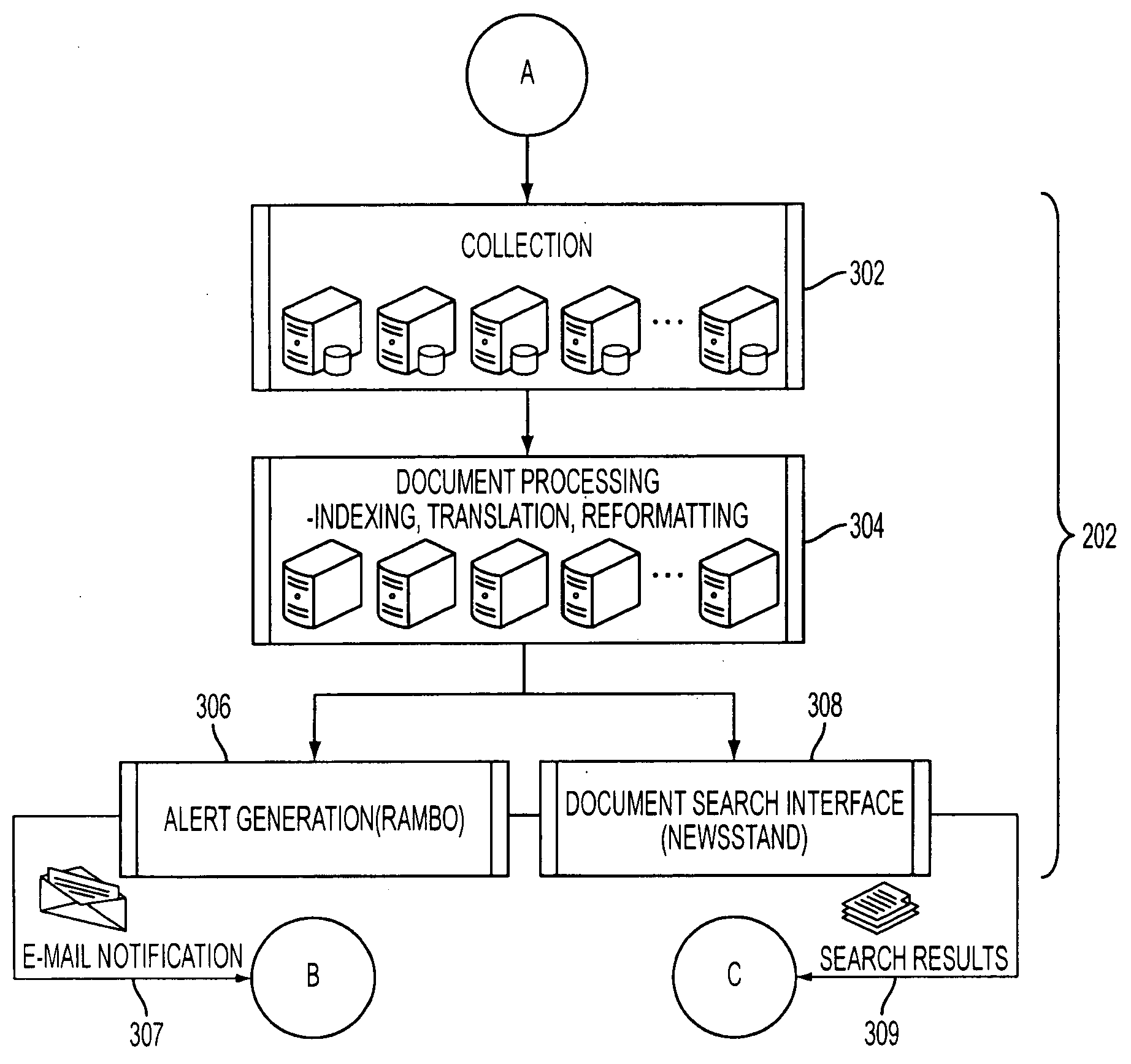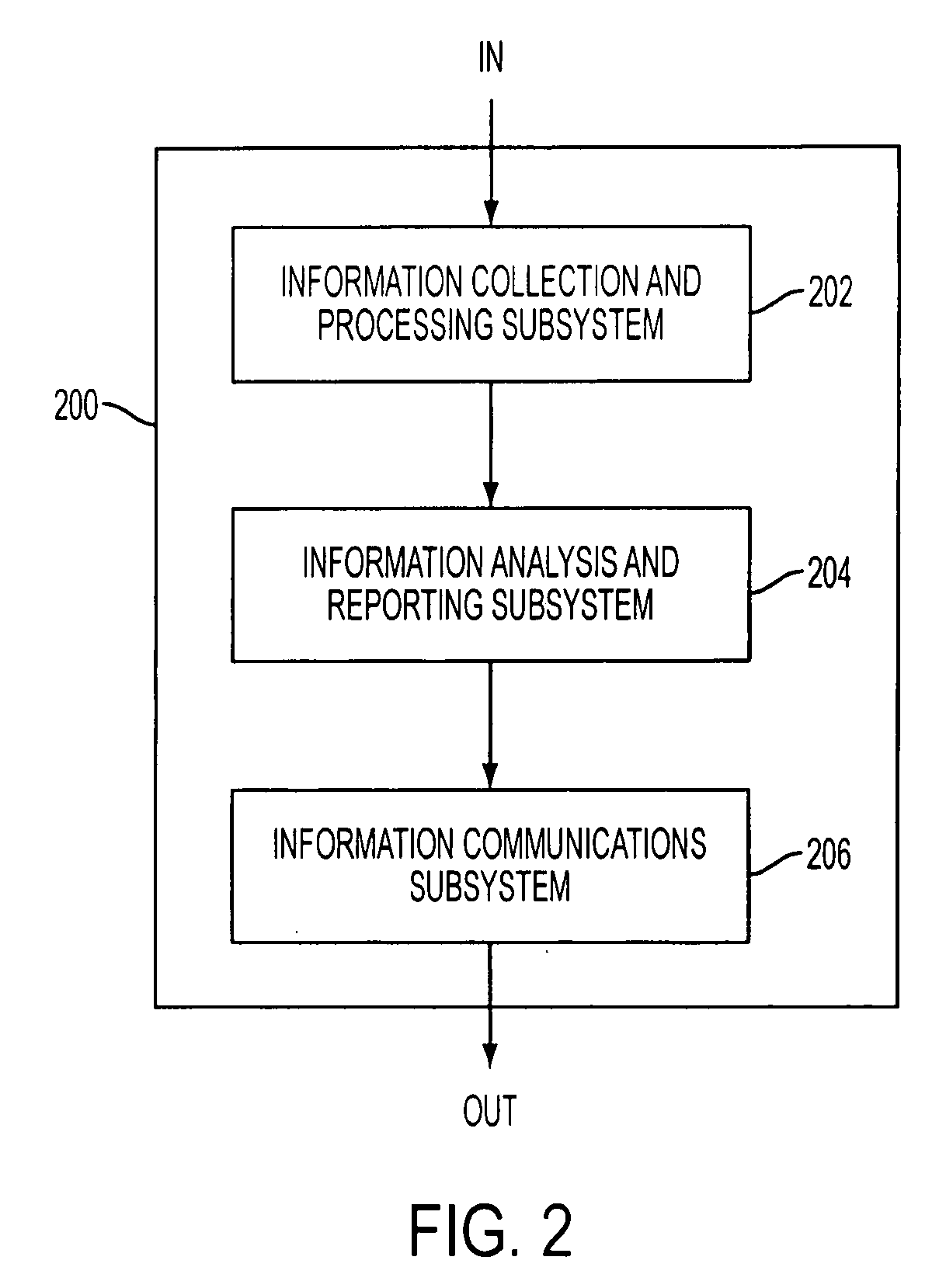System and method for detecting, collecting, analyzing, and communicating event-related information
a technology of event-related information and system, applied in the field of system and method for detecting, collecting, analyzing, and communicating event-related information, can solve the problems of extreme social disruption and exacerbate the effects of biological events, and achieve the effect of increasing the amount and increasing the number
- Summary
- Abstract
- Description
- Claims
- Application Information
AI Technical Summary
Benefits of technology
Problems solved by technology
Method used
Image
Examples
example 1
Influenza 2007
[0310]The system 200 has been used to detect, globally, social disruption evidence of influenza. FIG. 29 is a timeline of events and associated Alerts at the country level. Beginning at the top of the timeline, on Jan. 4, 2007, the first county-level report for the first influenza season in China was issued with an “Advisory” Alert value. Nine subsequent country-level reports were issued before a “Warning” Alert value was set on Jan. 21, 2007. The “Warning” was issued for China based on I&Ws evident in data obtained from various information sources 104. Those I&Ws included (1) the Guangdon Department of Health denied the existence of influenze outbreak; (2) citizens in Guangzhou were reportedly buying banlagen and other Traditional Chinese Medicine products “in an endless stream”; (3) sales at some pharmacies were up 40% and a shortage of cold medicines were reported; (4) Beijing Hospitals were said to be “deluged” and emergency supplies were being sent; and (5) “dozen...
example 2
Retrospective Analyses (Biological)
[0311]Retrospective and prospective analyses of biological events involving a variety of pathogens that were responsible for a broad range of social disruption was tested with the present invention. A retrospective case study for Rift Valley fever (RVF), Venezuelan equine encephalitis (VEE), and SARS, as well for influenza-like illness and plague was conducted (see Table 5).
TABLE 5DiseaseLocationDates of the EventInfluenza-likeKazakhstanFebruary 2005illnessInfluenza-likeRussiaFebruary 2005illnessPlaguePeople's Republic ofNovember 2004-December 2004ChinaPlagueTurkmenistanMay 2004-September 2004Rift ValleyKenyaOctober 1997-February 1998feverSARSPeople's Republic ofSeptember 1802-July 2003ChinaSARSPeople's Republic ofApril 2004ChinaSARSTaiwanDecember 2004VEEVenezuelaMarch 1995-October 1995
[0312]For each of the studies, on-site or online newspaper archives were examined, focusing on local media (online media archives were generally available after 2001...
example 3
Retrospective Analyses (Non-Biological)
[0316]The present system is described with regard to the Indian Ocean tsunami of Dec. 26, 2004. On December 29th, the Pentagon's Chemical-Biological Defense Directorate forwarded a request for tactical situational awareness support from onboard a U.S. Navy vessel as it steamed into Banda Aceh, Indonesia. The system 200 at the time was primarily focused on developing the social disruption I&Ws model for SARS in Guangdong Province, with all programmatic sourcing efforts devoted to that region of the world. However, because the system 200 also leveraged other international sources, the system was able to provide immediate input that a nuclear reactor in India had initiated an emergency shut-down cycle due to the regional earthquake activity. The system also reported on biological events that were reported that week; this was the first situational report issued when compared to WHO, ProMED, and the U.S. Pacific Command's situational awareness suppo...
PUM
 Login to View More
Login to View More Abstract
Description
Claims
Application Information
 Login to View More
Login to View More - R&D
- Intellectual Property
- Life Sciences
- Materials
- Tech Scout
- Unparalleled Data Quality
- Higher Quality Content
- 60% Fewer Hallucinations
Browse by: Latest US Patents, China's latest patents, Technical Efficacy Thesaurus, Application Domain, Technology Topic, Popular Technical Reports.
© 2025 PatSnap. All rights reserved.Legal|Privacy policy|Modern Slavery Act Transparency Statement|Sitemap|About US| Contact US: help@patsnap.com



